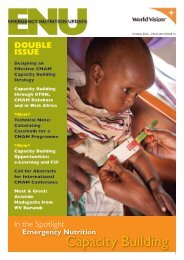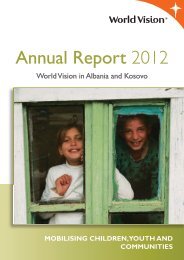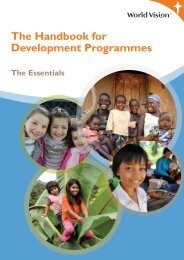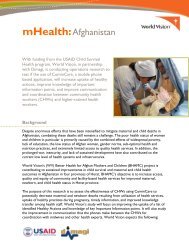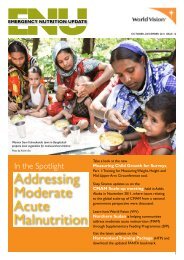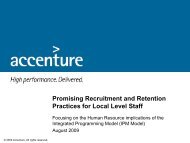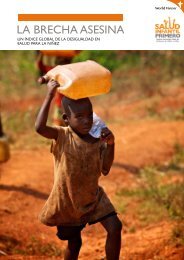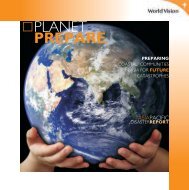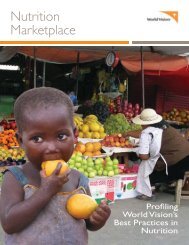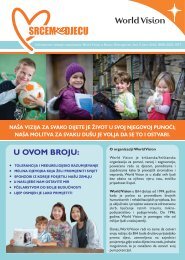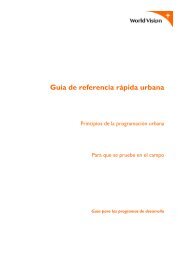the right to inclusive education for children with disabilities
the right to inclusive education for children with disabilities
the right to inclusive education for children with disabilities
Create successful ePaper yourself
Turn your PDF publications into a flip-book with our unique Google optimized e-Paper software.
Article 62/1: Special Education Schools <strong>for</strong> students <strong>with</strong> <strong>disabilities</strong> are part of <strong>the</strong> network of publicpre-university <strong>education</strong>al institutions of <strong>the</strong> Republic of Albania, Article 62/8: In villages or <strong>to</strong>wns where<strong>the</strong>re are no special <strong>education</strong> schools, <strong>children</strong> <strong>with</strong> <strong>disabilities</strong> can receive <strong>the</strong>ir <strong>education</strong> in 8-year publicschools, 1-2 per class; Un<strong>for</strong>tunately, this provision was not accompanied by separate decrees <strong>for</strong> specificapplications, thus leaving room <strong>for</strong> various interpretations, especially in respect <strong>to</strong> <strong>the</strong> practical aspect of<strong>education</strong>. In this way, <strong>the</strong> law did nei<strong>the</strong>r prohibit <strong>children</strong> <strong>with</strong> <strong>disabilities</strong> from attending mainstreamschools, nei<strong>the</strong>r ensured appropriate <strong>education</strong> <strong>for</strong> <strong>the</strong>m.a critical overview of <strong>the</strong> process of integrating <strong>children</strong> <strong>with</strong> <strong>disabilities</strong>in basic <strong>education</strong> schoolsIntegration of <strong>children</strong> <strong>with</strong> <strong>disabilities</strong> in basic <strong>education</strong> schools, certainly made possible <strong>the</strong> overthrowof a mistaken mentality that had dominated Albanian society <strong>for</strong> many decades, about <strong>the</strong>ir <strong>education</strong> inspecial schools only, but it did not make it <strong>to</strong> establish a stable foothold in deepening and streng<strong>the</strong>ningthis process. There were some successful experiences of integrating <strong>children</strong> <strong>with</strong> <strong>disabilities</strong> in mainstreamschools supported by local and international nongovernmental organizations. For one we can mention <strong>the</strong>project undertaken by <strong>the</strong> “Children’s Aid Direct” association during 1994-1996 in collaboration <strong>with</strong> <strong>the</strong>Education Direc<strong>to</strong>rate of Tirana and <strong>the</strong> National Association of Parents in Help of Children <strong>with</strong> mental<strong>disabilities</strong>, “under<strong>to</strong>ok a process of integration of some <strong>children</strong> <strong>with</strong> <strong>disabilities</strong> in kindergartens of Tirana.Also in this period, <strong>the</strong> Association of Parents in Librazhd, <strong>to</strong>day known as MEDPAK, <strong>to</strong>ok <strong>the</strong> initiative <strong>to</strong>include 11 <strong>children</strong> <strong>with</strong> <strong>disabilities</strong> in <strong>the</strong> school, “Genc Leka” of that city.These initiatives were also supported by normative provisions <strong>for</strong> public <strong>education</strong> in 1996, which statedthat “<strong>the</strong> integration of students <strong>with</strong> <strong>disabilities</strong> <strong>with</strong>in mainstream schools, is regarded asa necessary contemporary process” <strong>with</strong>out specifying <strong>the</strong> necessary solutions.In this context, Child Development Center in Tirana, during 1997-1998 academic year, under<strong>to</strong>ok aproject <strong>to</strong> integrate some <strong>children</strong> <strong>with</strong> <strong>disabilities</strong> in mainstream schools of Tirana (<strong>children</strong> <strong>with</strong> hearingimpairments, autism, hyperactivity, <strong>with</strong> psychomo<strong>to</strong>r developmental delays, speech problems, etc.). It isnoteworthy that in this period, were graduated <strong>the</strong> first students in <strong>the</strong> Faculty of Social Sciences inSocial Work and Psychology branch. These young professionals were part of teams in non-governmentalorganizations and state institutions and practices that applied integrating methods and practices in order<strong>to</strong> realize <strong>the</strong> <strong>education</strong> of <strong>children</strong> <strong>with</strong> <strong>disabilities</strong> in mainstream schools. They helped in <strong>the</strong> social modelapproach <strong>to</strong> treatment and assessment of <strong>children</strong> <strong>with</strong> <strong>disabilities</strong>. It may be noteworthy that in <strong>the</strong>special school “Luigj Gurakuqi” in Tirana in 1997, <strong>with</strong> <strong>the</strong> support of <strong>the</strong> European House, a social workerwas hired, creating a contemporary model in special schools, <strong>the</strong> work in a team <strong>with</strong> <strong>the</strong> participationof professionals from <strong>the</strong> different fields. But despite <strong>the</strong>se ef<strong>for</strong>ts <strong>the</strong> process of integrating <strong>children</strong> <strong>with</strong><strong>disabilities</strong> in mainstream schools was still a challenge that needed <strong>to</strong> go outside <strong>the</strong> framework of kindnessand mercy of <strong>the</strong>ir teachers in receiving <strong>the</strong>m in <strong>the</strong>ir classes. It had <strong>to</strong> be installed in <strong>the</strong> pro<strong>to</strong>cols andlegal structures that would turn this process in<strong>to</strong> a visible and tangible reality.But despite <strong>the</strong>se ef<strong>for</strong>ts, Albanian schools were not yet ready <strong>to</strong> admit <strong>children</strong> <strong>with</strong> <strong>disabilities</strong>; teachershad not received adequate training and <strong>education</strong>, so that despite achievements <strong>the</strong>re were still manyfailures as well.The third phase, 2000 onwardsThe leap in time from 1997 <strong>to</strong> 2000, is related <strong>to</strong> <strong>the</strong> chaos that swept <strong>the</strong> Albanian society in <strong>the</strong>se years,as well as <strong>with</strong> <strong>the</strong> Kosovo crisis, which brought in <strong>the</strong> Albanian terri<strong>to</strong>ry, a large inflow of refugees <strong>to</strong>ge<strong>the</strong>r<strong>with</strong> <strong>the</strong> accompanying problems <strong>the</strong>y had. After a several year tradition in terms of integration of <strong>children</strong><strong>with</strong> <strong>disabilities</strong>, a positive model in this field had been already established.In this period, <strong>the</strong> joint ef<strong>for</strong>ts of parents of <strong>children</strong> <strong>with</strong> <strong>disabilities</strong>, <strong>the</strong> state bodies, civil society and <strong>the</strong>specialists of <strong>the</strong> field, were oriented <strong>to</strong>ward <strong>the</strong> support of <strong>inclusive</strong> re<strong>for</strong>m in <strong>education</strong>. This re<strong>for</strong>mThe <strong>right</strong> <strong>to</strong> Inclusive Education <strong>for</strong> <strong>children</strong> <strong>with</strong> Disabilities33



